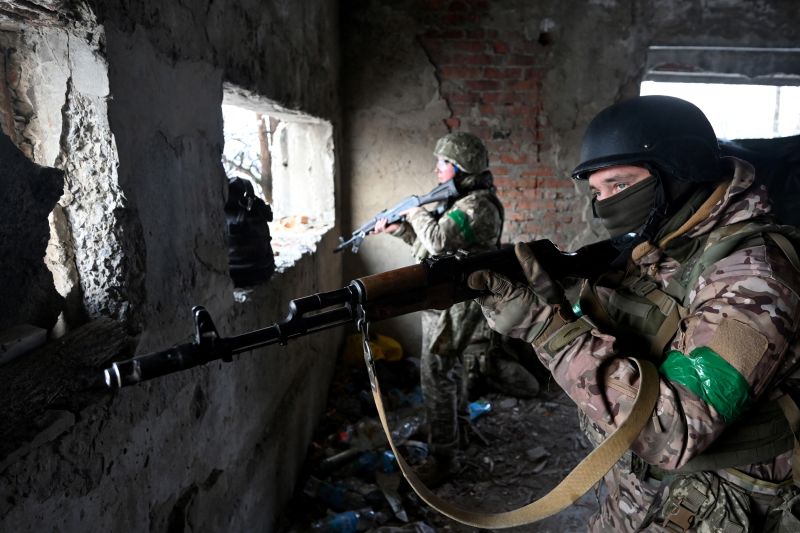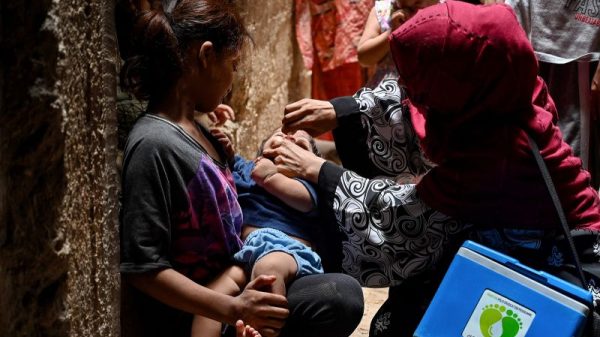The bad news keeps coming. Wherever Kyiv looks, Moscow seems to have the advantage.
Russia is making gains at key spots along the frontlines of eastern and southeastern Ukraine, while unleashing wave after wave of aerial terror against Ukrainian cities.
At the same time, Moscow is preparing to launch a counteroffensive in the southern Russian region of Kursk, the site of Kyiv’s only major military success this year. Moscow has deployed nearly 50,000 troops to Kursk, Ukrainian President Volodymyr Zelensky says, numbers that were boosted by recently arrived North Korean troops.
Barros, who leads the Russia and Geospatial Intelligence teams at the DC-based conflict monitoring group, said that Russia’s advantage on the battlefield makes it impossible for Ukraine to prepare for a possible counteroffensive.
“The Russians are the ones taking action, and they’re forcing the Ukrainians to respond. That’s not a good thing, because you lose wars by constantly being on the defensive. … You just get boxed into a corner and you have to choose from a buffet of bad options,” Barros added.
The situation is particularly dire around Kupiansk. The key northeastern city is once again at risk of falling to Russia after it was liberated by the Ukrainians in September 2022 following more than six months under Russian occupation.
Kupiansk sits on the crossroads of two major supply roads and the Oskil river, which forms a major defensive feature in the area. Taking over Kupiansk would make it a lot easier for Russia to push further into the Kharkiv region. That would in turn put further pressure on Kharkiv, Ukraine’s second biggest city that has been pummeled by Russian drones and missiles on nearly daily basis.
Russian state news agency Tass reported on Friday that Russian troops entered the outskirts of the city, although Ukrainian officials insisted Kupiansk remained under full control of their forces.
At the same time, Ukraine is struggling to hold back Russian advanced further south, around the city of Kurakhove, which has been surrounded from three sides for months. Earlier this week, Zelensky called the situation around Kurakhove “the most difficult area” of the frontline.
But while Russia seems poised to take over the city in the coming days or weeks, Barros said this may not be a strategically significant loss for Kyiv, as it won’t significantly impact its ability to defend the wider region.
Ukraine has put up a fierce fight in the area in recent months, even though it has lost some ground.
Kurakhove lies some 40 kilometers (25 miles) south of Pokrovsk, a key logistical hub that has been in Russia’s crosshairs for many months. By late summer, Pokrovsk appeared almost certain to fall. Yet Kyiv’s forces have – for now – managed to repel Russia’s advances there, forcing Moscow to redraw its plans.
Barros said that the Pokrovsk situation is just one example of Russia’s failure to achieve its own, publicly stated goals.
“They were working towards trying to seize Pokrovsk this fall, but they have abandoned this operational objective, and they’ve actually started attacking in a different direction,” Barros said.
“It’s not just the Russians failing. It is actually part of a very stalwart Ukrainian defense,” he added.
Since seizing Avdiivka in early 2024, Russia has only managed to advance some 30 to 40 kilometers (18 to 25 miles) deeper into Ukraine’s territory. That is a very small advance given the huge costs to the Russian military.
Moscow has lost about five divisions worth of mechanized equipment, amounting to many hundreds of tanks and armed personnel carriers, in the Pokrovsk region in just the past year, according to the ISW’s assessment of visual evidence from the battlefield.
“To lose five divisions worth of tanks and other personnel carriers over the course of a year to only advance about 40 kilometers, you can go and compare this to all the other major mechanized offenses of the 21st century and even the great battles of the Second World War …. that’s actually a really terrible performance,” Barros said.
War of attrition – but for how much longer?
Since the start of the full-scale invasion, and despite the assistance from its allies, Ukraine has always been on the back foot when it comes to material and manpower.
Russia has more weapons; more ammunition and more people.
Russian President Vladimir Putin’s strategy still appears to be slowly grinding Ukraine down by outgunning and outspending it and by wearing down its western allies.
But number of analysts have said that Putin has a limited window of opportunity to achieve this goal, given the staggering losses Russia is suffering to make even the smallest advances.
The strain the conflict is putting on Russia’s economy is clearly growing. Russia has massively increased its military spending over the past two years and its economy is now showing signs of overheating: inflation is running high, and companies are facing labor shortages. Trying to control the situation, the Russian Central Bank has raised interest rates to 21% in October, the highest in decades.
And while Russia has many more people than Ukraine, it is suffering significant losses and recruitment of new troops is already a problem – last time the Russian military introduced a partial mobilization, hundreds of thousands of men fled the country.
The recent influx of North Korean troops into Russia will help for some time, but the material losses could be harder to make up for.
“Between the economy, the shortage of men in Russia and losing the pile of vehicles that the Russians require for their current style warfare, these are strategic resources that are going to impose serious problems on the Kremlin if the current tempo holds for the next year,” Barros said.
Whether Ukraine could take advantage of these problems will depend mostly on the willingness of its allies to continue support it – and the return of the former president Donald Trump to the White House certainly puts a major question mark over that.
Zelensky this week said that the war will end “faster” once Trump returns to the presidency.
“If the international Western coalition, including the United States, keeps backing the Ukrainians for the next maybe 12 to 16, 18 months, there will be opportunities to really disrupt the way that the Russians have been resourcing this war,” Barros said. “(They) can decide whether the Russians win or lose.”










